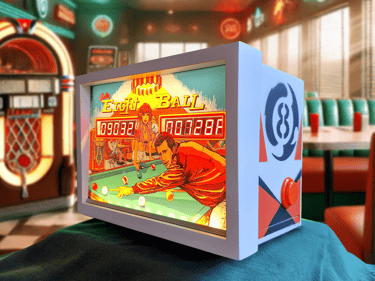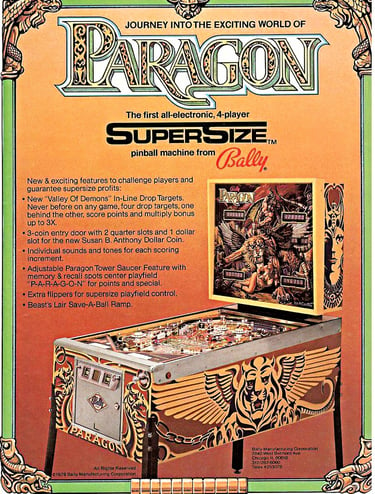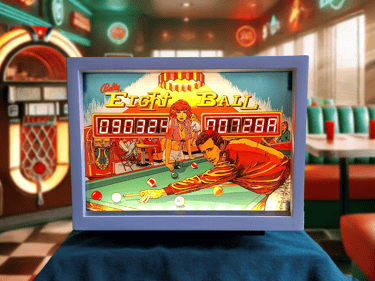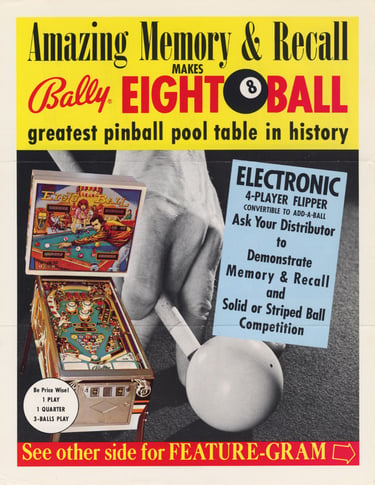Philippe Gregoire
As an engineer with a love for artwork and americana, it was only a matter of time before Philippe Gregoire would fall in love with pinball. Getting started with collecting in his early 30s with electronic machines, he fell down the rabbit hole of pinball restoration, finding his niche in the electromechanical machines of the 60s and 70s.
With an obsession for detail and a reverence for the artful engineering of the golden age of pinball, Philippe handcrafts the Ayscrim Studios score reel clocks he designed, inspired by the electromechanical machines he has been restoring for the last decade.
Operators take note:
The purpose of this device is twofold: first that the user gets a reliable reading of time, and second that they may bring the spirit of pinball into their home or office at all times.
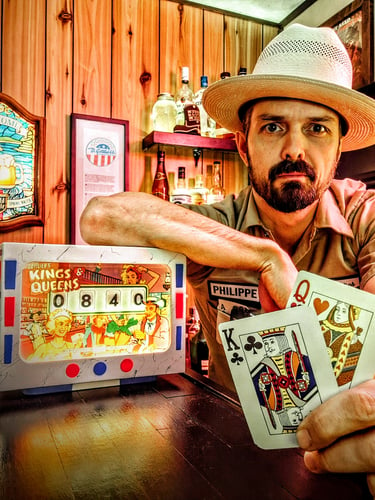
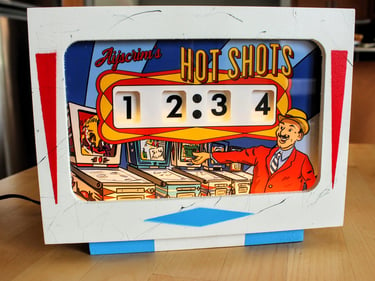


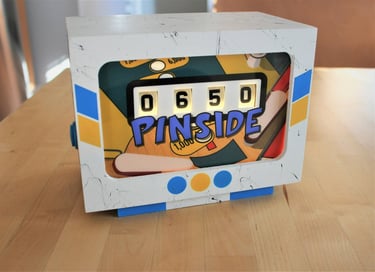


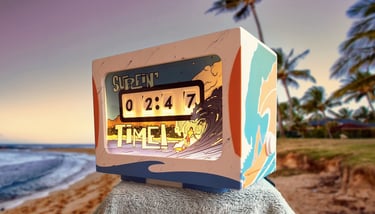








Brad Albright
Brad earned his Bachelor of Fine Arts from Cornell University’s College of Architecture, Art & Planning, where he studied Combined Media to join the disciplines of traditional studio art with those of cartooning and animation.
While working as a full-time professional graphic designer, he earned his Master of Fine Arts at Hartford Art School's MFA program in Illustration, assembling award-winning professional artists and teachers from the nation's leading markets. During this time, Brad taught himself his own specialized 3D technique.
In 2018 Brad retired from his long-time position designing officially licensed pop-culture merchandise, making the leap to concentrate 100% on drawing and sharing his work with audiences in Dallas/Ft. Worth and beyond.
His work can be found regularly at Kettle Art Gallery (Dallas), Gallery 1988 (Los Angeles), Hero Complex Gallery (Los Angeles), and at regular shows and festivals Dallas/Fort Worth area.
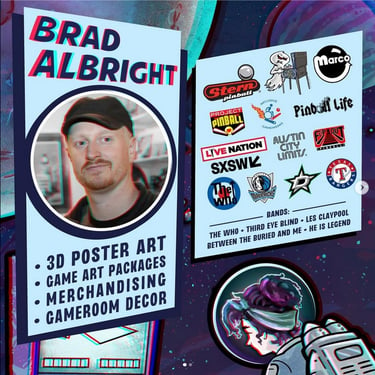
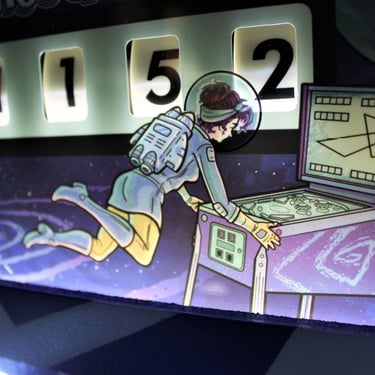
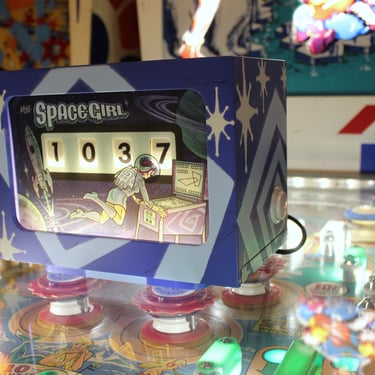


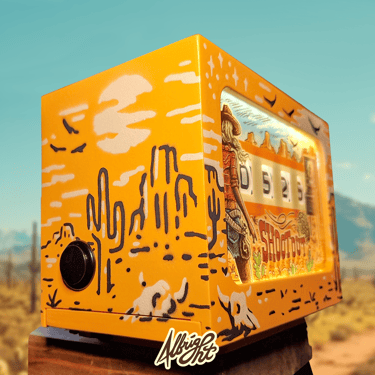
Johnny Crap
Jonathan Bergeron, better known under the alias Johnny Crap, is a Montreal-based artist where he was born, lives, and works. His passion for outsider art took root during his teenage years, heavily influenced by skateboarding, punk rock, and graffiti culture.
Since the mid-90s, he has been an active figure in the Montreal graffiti scene under the "ZEN" moniker, and he continues to create occasional mural work. Today, Bergeron primarily focuses on studio painting, producing figurative fine art alongside lowbrow, comic, and sci-fi inspired illustrations.
For many years, he has designed merchandise for internationally renowned musical acts such as Slayer, Guns N' Roses, Alice Cooper, and Anthrax, among others. His freelance illustration work also extends to major brands like Nike, Under Armour, Metal Mulisha, and Dethrone.
In 2019, Bergeron was introduced to the world of pinball when he designed the Jurassic Park pinball package for Stern Pinball, the largest pinball manufacturer in the world. Since then, he has remained deeply involved in the scene, creating artwork for additional pinball machines including Dune and Labyrinth by Barrels of Fun , and Final Resistance by Multimorphic as well as designing pinball-related merchandise for a variety of clients.
Also, he really loves Star Wars.



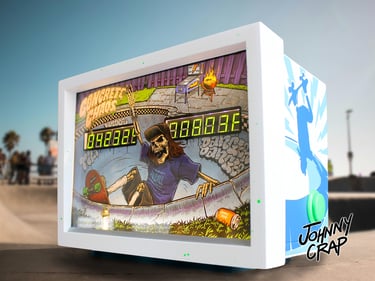




Pierre Tardif
Pierre Tardif has been hand lettering for over 35 years. Since the opening of his sign shop in 1988, all of his work has always been hand painted, and still is today. The bulk of his work is the creation and production of vintage lettering and signage.
In general his customers consist of businesses with historical interests, car collectors, custom car owners, museums and movie productions. His ability to precisely recreate the environment of times gone by, has gained him international recognition. His work has been featured in sign magazines, TV productions and in advertisements for 'One Shot Paint'. Pierre has found great inspiration from his huge vintage sign book collection and by rubbing elbows with some of the best veteran sign artists in the industry.
As a very skilled artist who is driven by passion, he has spent years practicing and perfecting his art of traditional sign painting. His services now consist of consulting, designing and sign painting.
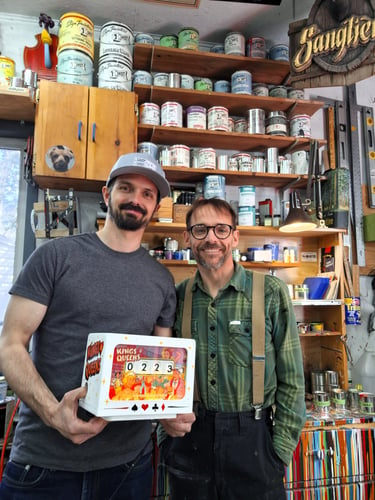
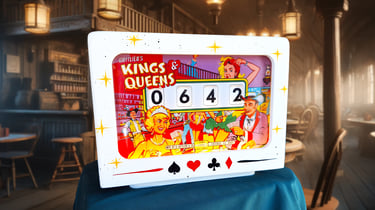
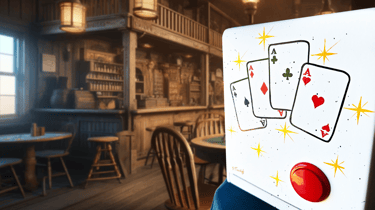
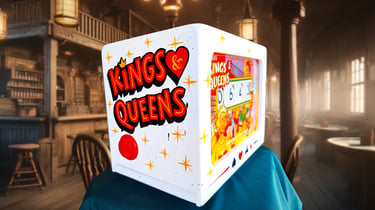





Joe Tamponi
Joe Tamponi is a freelance illustrator from Sardinia, Italy, whose work is heavily inspired by skateboarding, surfing, and the punk-rock art of the 1980s and 1990s.
He grew up skateboarding and surfing, drawing early influence from the graphics of Zero Skateboards, Fallen Footwear, Mystery Skateboards—essentially the Jamie Thomas universe—as well as the iconic visuals of Santa Cruz Skateboards and many NHS brands.
Joe is also deeply influenced by the psychedelic art of the 1960s and 70s, including the groundbreaking work of Wes Wilson and Stanley Mouse. This heritage shows in his bold use of flashy colors and high-contrast, eye-popping palettes.
He has collaborated with clothing brands, coffee roasters, craft beer producers, skateboard companies, musicians, and many others.

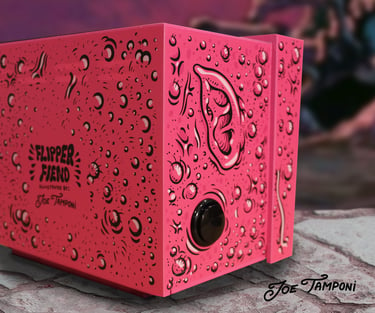
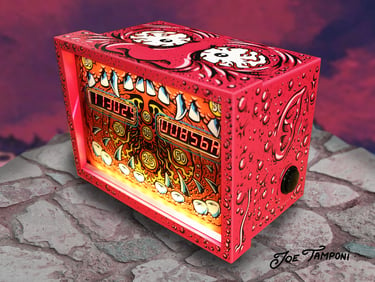
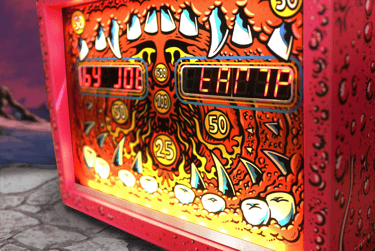




Roy Parker
Charles Leroy Parker (1899 - 1965), better known as Roy Parker, was the unparalleled artist behind the iconic artwork of Gottlieb pinball machines from 1930 until his passing. Although specifics of his life remain scarce, Parker's legacy is vividly preserved through his contributions to the pinball world. He was employed by two major art houses of the era, Advertising Posters (Ad Posters) and Reproduction Graphics (RG), both instrumental in the silkscreening of playfields and backglasses for pinball companies. Despite the challenges, including RG's demise after two fires, Parker's dedication to his craft never wavered. David Gottlieb, recognizing Parker's exceptional talent, insisted that he be the sole artist for all Gottlieb artwork, making Parker's distinctive style synonymous with the brand.
Parker's artwork, celebrated for its meticulous attention to detail, whimsy, and vibrant colors, adorned games like "Humpty Dumpty," "Dragonette," "Mystic Marvel," and "Kings & Queens." His themes often featured playful animals, humorously depicted characters, and dynamic females, leaving a lasting impression on the pinball community.


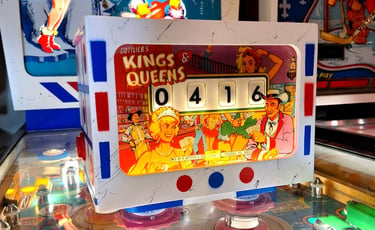
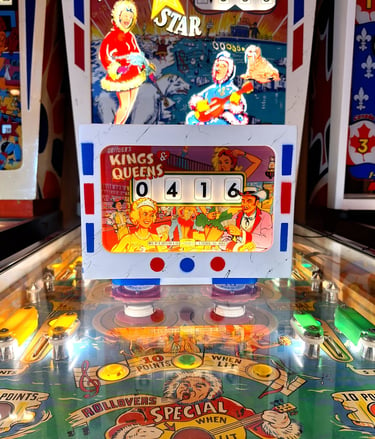
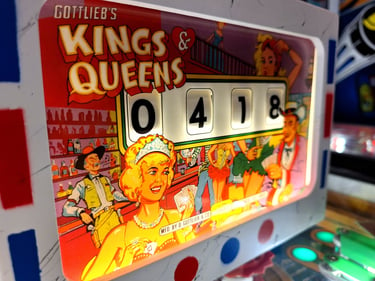
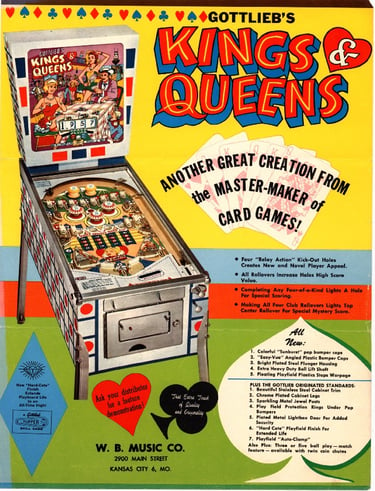






Gordon Morison
Gordon Morison was a distinguished artist in the pinball industry, particularly celebrated for his work with Gottlieb pinball machines during the 1970s. Born in Indiana on April 27, 1930, Morison's creative journey was shaped by his service in the U.S. Army during the Korean War. His artistic contributions to the pinball world are nearly unmatched, with around 150 games bearing his creative signature. Morison's work coincided with the golden age of pinball art, a period known for its vibrant, culturally resonant designs, often featuring bold, dynamic themes ranging from rock 'n' roll to fantasy worlds.
Morison's ability to adapt to various styles made him a central figure in this era, especially at Gottlieb, a company pivotal for introducing the game-changing mechanism of flippers to pinball machines. His art not only captivated players but also played a significant role in the game selection process, drawing players to one machine over another with its visual allure. Morison's legacy extends beyond his artworks; he's remembered as a trailblazer who infused pinball machine design with a soul and an artistic identity that continues to be celebrated by enthusiasts and collectors. Sadly, Morison passed away on July 22, 2000, leaving behind a rich legacy of pinball art that continues to be admired and studied by aficionados of the game.
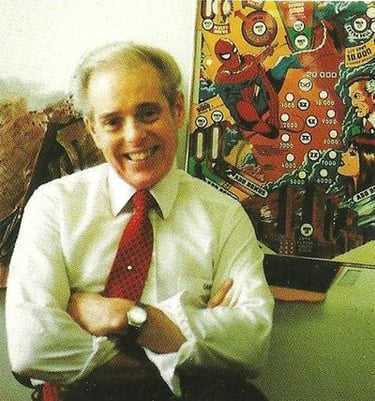

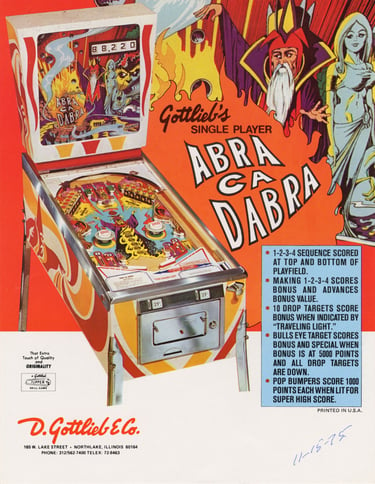
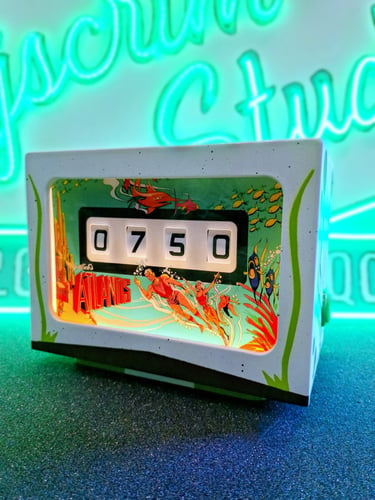
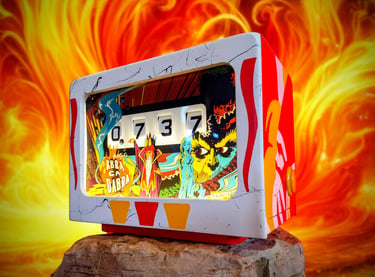
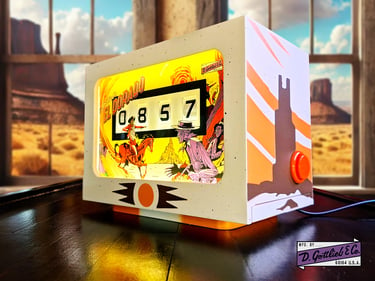






Art Stenholm
Arthur “Art” Stenholm began working as commercial artist for Advertising Posters in March of 1964 with artists Roy Parker and George Molentin. Advertising Posters was a graphic design company that produced artworks for pinball machine manufacturers Bally and Williams. Stenholm’s boss, George Molentin, was the Art Director for Advertising Posters, and he managed the print production for all of the big pinball companies at the time.
Roy Parker's failing health may have created a situation where he and Stenholm worked together on a few projects, with Parker training Stenholm as his heir to the Gottlieb artist throne. There are many examples of Stenholm's involvement in Parker’s artworks such as World Fair, Kings and Queens, North Star, and Central Park. Regardless of whether or not he was groomed to be Parker’s replacement, Stenholm assumed the position of Gottlieb’s lead artist following Parker's death in 1966.
Stenholm’s artwork is distinct from Parker’s in the way Stenholm frequently presented women as self-assured and capable human beings, rather than helpless glamour dolls and beauty props for male amusement. Possibly influenced by the relationship with his daughters, Stenholm’s work encouraged and empowered women to play pinball by incorporating them playing the game directly into the artwork. He often depicted women as active participants in sports, music, and other facets of fun and life, a departure from the pinball art up to then.
Arthur “Art” Stenholm passed away in 2007 at the age of 90.
(Bio and photo from https://www.pacificpinball.org)
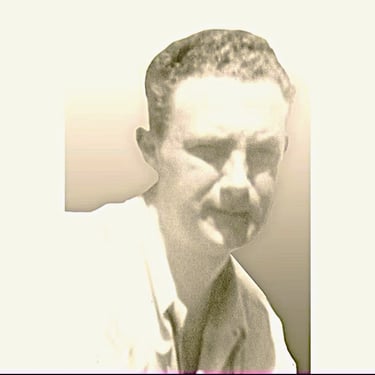
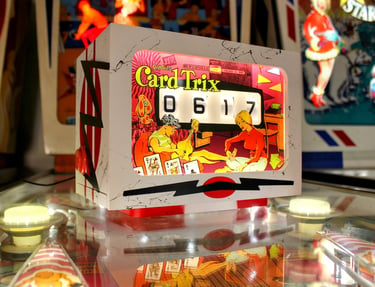

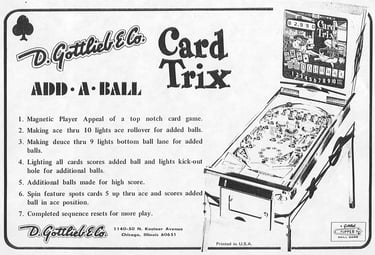




Paul Faris
Paul Faris is a renowned pinball artist, best known for his vibrant and dynamic artwork on iconic pinball machines during the golden age of the arcade industry. Faris gained widespread recognition for his contributions to Bally Manufacturing in the 1970s and 1980s, creating memorable and intricate designs for some of the most popular pinball games of the era.
His art is characterized by bold colors, fantasy themes, and intricate detailing, making the backglass and playfields of the pinball machines visually stunning. Faris is particularly famous for his work on titles such as Centaur, Paragon, and Eight Ball, where his ability to blend fantasy, science fiction, and realism added a new level of appeal to the machines. His designs not only captured the essence of the game but also helped define the aesthetic of pinball during its peak popularity.
In addition to his work in the pinball industry, Paul Faris contributed to other forms of entertainment art, including promotional posters and graphic design, always maintaining his unique style. His influence on pinball art remains highly respected, with collectors and enthusiasts often praising the detail, imagination, and craftsmanship that define his iconic works.
Photo credit: PinballExpo.com

